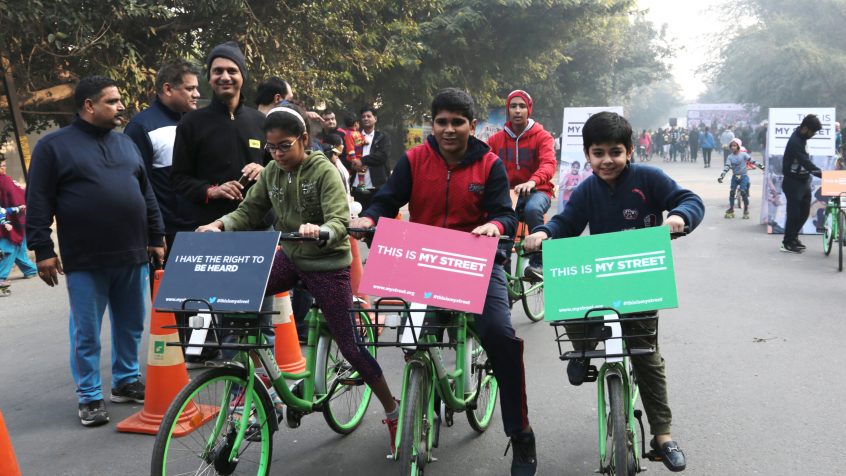
Beating air pollution for a safe and healthy journey to school
All children have the right to a quality education – and the right to breathe clean air on their way to school. The Child Health Initiative (CHI), one of more than 600 projects listed in a database of good practices for the SDGs created by UN DESA, is a partnership of organizations working to ensure that every child around the world enjoys a safe and healthy journey to school.
Every year, approximately 1.35 million people die as a result of road traffic crashes, which are the leading cause of death for children and youth aged 5-29 years. The very tangible threat of a traffic accident is further compounded by an invisible danger – ambient air pollution. Globally, 93 per cent of all children breathe air that contains higher concentrations of pollutants than the World Health Organization (WHO) considers safe to human health. As a result, 600,000 children die prematurely each year because of air pollution.
As if that were not enough, exposure to dirty air also harms brain development, leading to cognitive and motor impairments and putting children at greater risk of chronic disease later in life.
The Child Health Initiative advocates and supports practical activities to ensure that every child can enjoy safe roads, breathe clean air, receive an education, explore in safety, be protected from violence and be heard. Cutting across several Sustainable Development Goals, the Initiative focuses on policies for sustainable transportation, road safety, clean fuels and vehicles, and equitable urban development.
CHI brings together stakeholders from health, education, child rights, climate change, sustainable transport, governance, urban design and road safety to maximize a range of social, environmental and economic benefits, save lives and increase safe and active travel around schools.
At the grassroots level, the Initiative works to improve infrastructure and road safety education, distributes helmets, and promotes the use of non-motorized modes of transport. For example, in sub‑Saharan Africa, Amend’s School Area Road Safety Assessments and Improvements (SARSAI) program reduces road traffic injuries around schools in nine countries, and includes evidence-based interventions, such as new pedestrian infrastructure. The Initiative carries out similar projects across Africa, Asia and Latin America.
CHI convenes organizations with technical expertise, advocacy, and a focus on child health, rights, and mobility, creating a global partnership.
What are the inspiring breakthroughs and success stories that illustrate SDG implementation? What are the good practices that can be replicated and scaled up? What are the gaps and constraints and how should we address them? Looking ahead, what steps should we take to accelerate progress? To help answer these and other questions, UN DESA gathered more than 600 good SDG practices in a searchable online database. Be inspired by SDG solutions that work: https://sustainabledevelopment.un.org/partnerships/goodpractices

Follow Us